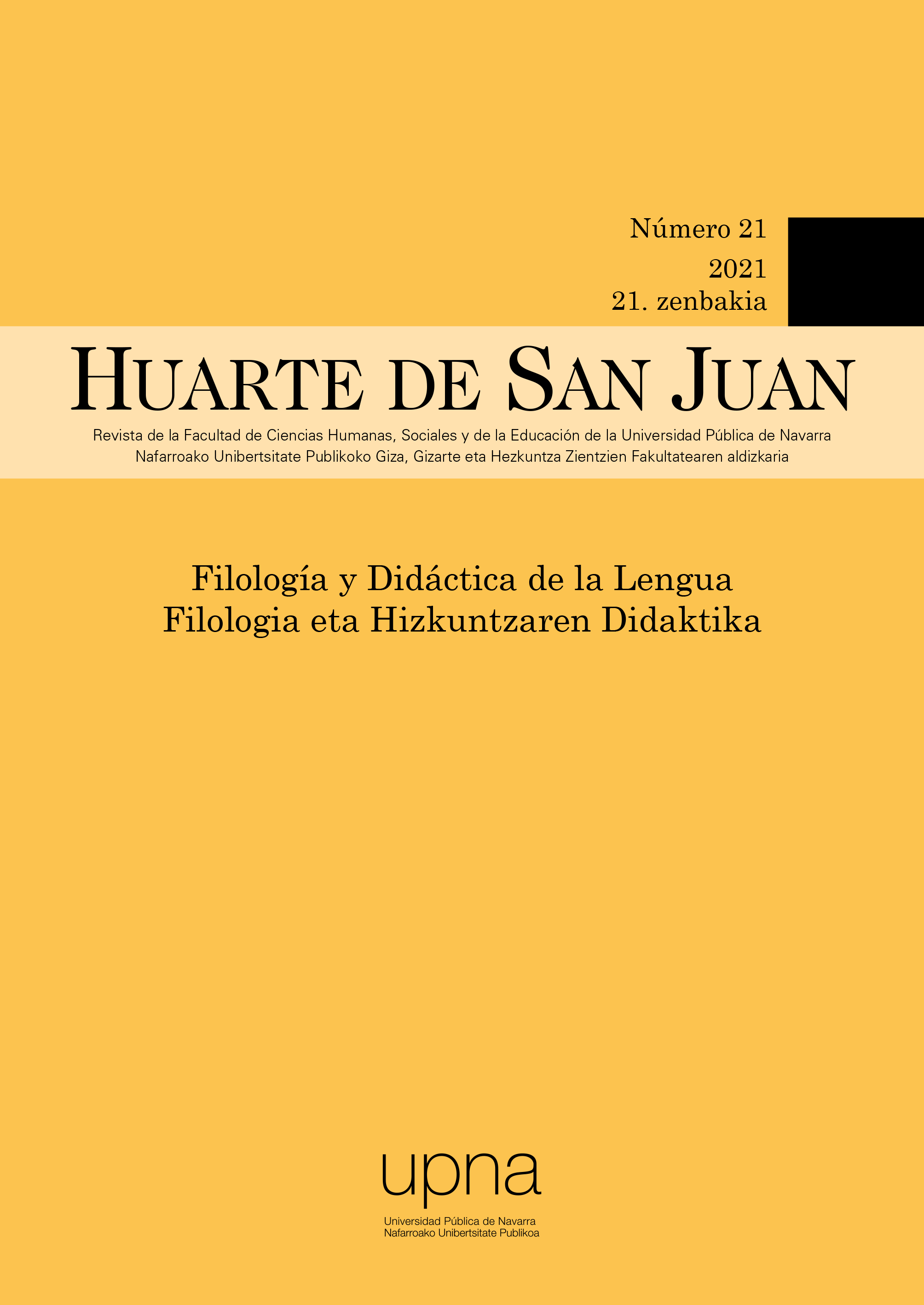L2 VOCABULARY AND LISTENING
DOI:
https://doi.org/10.48035/rhsj-fd.21.6Keywords:
EFL, second language teaching, L2 vocabulary, L2 listeningAbstract
ABSTRACT
The relationship between second language vocabulary and listening comprehension has been barely explored, and in most cases with inadequate instruments. This study intends to bridge those gaps by examining the contribution of the language learners’ vocabulary size to their listening ability.
The vocabulary size of 284 learners of English was assessed with both an aural and a written vocabulary test. A standardized listening test was used to assess their listening ability. Data were analysed with the Rasch model to determine the participants’ abilities and the item difficulties.
Evidence from data analyses supported the following findings:
- L2 vocabulary knowledge and listening comprehension are strongly and positively related.
- Aural and written vocabulary knowledge are two clearly different dimensions.
- Aural vocabulary knowledge predicts listening comprehension better than written vocabulary knowledge, especially among weaker listeners.
Based on these results, more emphasis could be placed on learners’ aural vocabulary knowledge to improve their listening.
KEYWORDS: EFL; second language teaching; L2 vocabulary; L2 listening;
RESUMEN
La relación entre el vocabulario y la comprensión oral en una segunda lengua ha sido poco explorada, y en la mayoría de los casos con instrumentos inadecuados. Este estudio pretende llenar esos vacíos investigando la contribución del tamaño del vocabulario de los estudiantes de lenguas en su capacidad de comprensión oral.
El tamaño de vocabulario de 284 estudiantes de inglés como segunda lengua fue valorado tanto con una prueba oral de vocabulario como con una prueba escrita. Una prueba estandarizada de comprensión oral fue utilizada para valorar su capacidad de comprensión oral. Los datos fueron analizados con el modelo Rasch para determinar las capacidades de los participantes y las dificultades de los elementos de las pruebas.
Las evidencias provenientes de los análisis de datos apoyaron los siguientes hallazgos:
- El conocimiento de vocabulario y la comprensión oral en una segunda lengua están relacionados de forma clara y positiva.
- El conocimiento de vocabulario oral y escrito son dos dimensiones claramente distintas.
- El conocimiento de vocabulario oral predice mejor la comprensión oral que el conocimiento de vocabulario escrito, particularmente entre quienes tienen peor comprensión oral.
Con base en estos resultados, se podría poner un mayor énfasis en el conocimiento de vocabulario oral de quienes aprenden una segunda lengua para mejorar su comprensión oral.
KEYWORDS: inglés como lengua extranjera; enseñanza de segunda lengua; vocabulario de segunda lengua; comprensión oral de segunda lengua;
Downloads
References
Alderson, J. C. (2005). Diagnosing foreign language proficiency: The interface between learning and assessment. Continuum.
Anderson, J. (2020). Cognitive psychology and its implications. (9th edition). Worth Publishers.
Beglar, D., & Nation, P. (2007). A vocabulary size test. The Language Teacher, 31(7), 9-13.
Bond, T. G., & Fox, C. M. (2015). Applying the Rasch Model: fundamental measurement in the human sciences (3rd ed.). Routledge.
Bonk, W. (2000). Second Language Lexical Knowledge and Listening Comprehension. International Journal of Listening, 14(1), 14-31. https://doi.org/10.1080/10904018.2000.10499033
Brentari, E., & Golia, S. (2007). Unidimensionality in the Rasch model: how to detect and interpret. Statistica, 67(3), 253-261. https://doi.org/10.6092/issn.1973-2201/3508
Cai, W., & Lee, B. P. (2010). Investigating the effect of contextual clues on the processing of unfamiliar words in second language listening comprehension. Australian Review of Applied Linguistics, 33(2), 18.1-18.28. https://doi.org/10.2104/aral1018
Cambridge University Press (2008). Cambridge English: Preliminary 5 with answers: official examination papers from University of Cambridge ESOL examinations. (2008). Cambridge University Press.
Chang, A. C., & Millett, S. (2014). The effect of extensive listening on developing L2 listening fluency: Some hard evidence. ELT journal, 68(1), 31-40. https://doi.org/10.1093/elt/cct052
Cheng, J., & Matthews, J. (2018). The relationship between three measures of L2 vocabulary knowledge and L2 listening and reading. Language Testing, 35(1), 3-25. https://doi.org/10.1177/0265532216676851
Cohen, J. (2013). Statistical power analysis for the behavioral sciences. New York: Academic Press Inc.
Cross, J. D. (2009). Diagnosing the process, text and intrusion problems responsible for L2 listeners’ decoding errors. Asian EFL Journal, 11(2), 31-53.
European Commission. (2012). First European survey on language competences. Final Report. Publications Office of the European Union. Version 4.0, 15 June 2012. Retrieved from https://crell.jrc.ec.europa.eu/sites/default/files/files/eslc/ESLC_Final%20Report_210612.pdf
Eyckmans, J. (2004). Measuring Receptive Vocabulary Size: Reliability and Validity of the Yes/No Voca-bulary Test for French-speaking Learners of Dutch. (Doctoral dissertation, Netherlands Graduate School of Linguistics). LOT.
Field, J. (2008a). Bricks or mortar: which parts of the input does a second language listener rely on? TESOL quarterly, 42(3), 411-432. https://doi.org/10.1002/j.1545-7249.2008.tb00139.
Field, J. (2008b). Emergent and divergent: A view of second language listening research. System 36(1), 2-9. https://doi.org/10.1016/j.system.2008.01.001
Field, J. (2009). Listening in the Language Classroom. Cambridge University Press. https://doi.org/10.1017/CBO9780511575945
Fung, D., & Macaro, E. (2019). Exploring the relationship between linguistic knowledge and strategy use in listening comprehension. Language Teaching Research: LTR, 1362168819868879. https://doi.org/10.1177/1362168819868879
Graham, S. (2006). Listening comprehension: The learners’ perspective. System (Linköping), 34(2), 165-182. https://doi.org/10.1016/j.system.2005.11.001
Graham, S., & Santos, D. (2015). Strategies for second language listening: Current scenarios and improved pedagogy. Palmgrave McMillan UK. https://doi.org/10.1057/9781137410528
Graham, S., Santos, D., & Vanderplank, R. (2008). Listening comprehension and strategy use: A longitudinal exploration. System, 36(1), 52-68. https://doi.org/10.1016/j.system.2007.11.001
Hulstijn, J. (2003). Connectionist Models of Language Processing and the Training of Listening Skills With the Aid of Multimedia Software. Computer Assisted Language Learning, 16(5), 413-425. https://doi.org/10.1076/call.16.5.413.29488
Lim, G. S., & Khalifa, H. (2013). Criterion-related validity. In Garanpayeh, A., & Taylor, L. (eds.). Examining Listening: Research and Practice in Assessing Second Language Listening (vol. 35), (pp. 303-321). Cambridge University Press.
Linacre, J. M. (1997). KR-20 / Cronbach Alpha or Rasch Person Reliability: Which Tells the «Truth»? Rasch Measurement Transactions, 11(3), 580-581.
Linacre, J. M. (2012, 2019). Winsteps® Rasch Measurement, version 4.4.3. [Computer software] Downloaded from http://www.winsteps.com
Linacre, J. M., & Wright, B.D. (1989). The «Length» of a Logit. Rasch Measurement Transactions, 1989, 3(2), 54-55.
Masrai, A. (2020). Exploring the impact of individual differences in aural vocabulary knowledge, written vocabulary knowledge and working memory capacity on explaining L2 learners’ listening comprehension. Applied Linguistics Review, 11(3), 423-447. https://doi.org/10.1515/applirev-2018-0106
Matthews, J., & Cheng, J. (2015). Recognition of high frequency words from speech as a predictor of L2 listening comprehension. System (Linköping), 52, 1-13. https://doi.org/10.1016/j.system.2015.04.015
McLean, S., Kramer, B., & Beglar, D. (2015). The creation and validation of a listening vocabulary levels test. Language Teaching Research: LTR, 19(6), 741-760. https://doi.org/10.1177/1362168814567889
Milton, J. (2009). Measuring second language vocabulary acquisition. Multilingual Matters.
Milton, J., & Hopkins, N. (2006). Comparing Phonological and Orthographic Vocabulary Size: Do Vocabulary Tests Underestimate the Knowledge of Some Learners. The Canadian Modern Language Review / La Revue Canadienne des Langues Vivantes, 63(1), 127-147. https://doi.org/10.1353/cml.2006.0048
Nation, I. S. P. (2001) Learning vocabulary in another language. Cambridge University Press.
Nunan, D. (2002). Listening in language learning. In Richards, J. C., & Renandya, W. A. (Eds.) Methodology in language teaching: An anthology of current practice (pp. 238-241). Cambridge University Press.
Paas, F., & Sweller, J. (2014). Implications of cognitive load theory for multimedia learning. In Mayer, R. E. (Ed.), The Cambridge handbook of multimedia learning, 2nd edition (pp. 27-42). Cambridge University Press. https://doi.org/10.1017/CBO9781139547369.004
Pan, Y. C., Tsai, T. H., Huang, Y. K., & Liu, D. (2018). Effects of expanded vocabulary support on L2 listening comprehension. Language Teaching Research, 22(2), 189-207. https://doi.org/10.1177/1362168816668895
Read, J. (2013). Second language vocabulary assessment. Language Teaching, 46(1), 41-52. https://doi.org/10.1017/S0261444812000377
Richards, J. C. (2008). Teaching listening and speaking from theory to practice. Cambridge University Press.
Rost, M. (2006). Areas of research that influence L2 listening instruction. In E. Usó-Juan & A. Martínez-Flor (Eds.). Current Trends in the Development and Teaching of the Four Language Skills (pp. 47-73). Mouton de Gruyter; Walter de Gruyter, Inc. https://doi.org/10.1515/9783110197778.2.75
Rost, M. (2011). Teaching and Researching Listening (2nd ed.). New York: Pearson Education.
Schmitt, N., Schmitt, D., & Clapham, C. (2001). Developing and exploring the behaviour of two new versions of the Vocabulary Levels Test. Language testing, 18(1), 55-88. https://doi.org/10.1177/026553220101800103
Siegel, J. (2013). Exploring L2 listening instruction: examinations of practice. ELT Journal 68(1), 22-30. https://doi.org/10.1093/elt/cct058
Stæhr, L. S. (2009). Vocabulary knowledge and advanced listening comprehension in English as a foreign language. Studies in second language acquisition, 31(4), 577-607. https://doi.org/10.1017/S0272263109990039
Stanovich, K. E. (1980). Toward an interactive-compensatory model of individual differences in the development of reading fluency. Reading Research Quarterly 16(1), 32-71. https://doi.org/10.2307/747348
UCLES (2012). The Cambridge English: Preliminary and Preliminary for Schools Vocabulary List. Retrieved from https://www.cambridgeenglish.org/Images/84669-pet-vocabulary-list.pdf
UCLES (2019). Cambridge English: The Cambridge English Scale Explained. A guide to converting practice test scores to Cambridge English Scale scores. Retrieved from https://www.cambridgeenglish.org/Images/210434-converting-practicetest-scores-to-cambridge-english-scale-scores.pdf
van Zeeland, H. (2014a). Second language vocabulary knowledge in and from listening (Doctoral dissertation, University of Nottingham).
van Zeeland, H. (2014b). Lexical inferencing in first and second language listening. The Modern Language Journal, 98(4), 1006-1021. https://doi.org/10.1111/modl.1215
van Zeeland, H. (2018). Vocabulary in Listening. In Liontas, J.I., T. International Association and DelliCarpini, M. (Eds.), The TESOL Encyclopedia of English Language Teaching (pp. 1-6). https://doi.org/10.1002/9781118784235.eelt0614
van Zeeland, H., & Schmitt, N. (2013). Lexical coverage in L1 and L2 listening comprehension: The same or different from reading comprehension? Applied Linguistics, 34(4), 457-479. https://doi.org/10.1093/applin/ams074
Vandergrift, L. (2007). Recent developments in second and foreign language listening comprehension research. Language Teaching, 40(3), 191-210. https://doi.org/10.1017/S0261444807004338
Vandergrift, L., & Baker, S. (2015). Learner variables in second language listening comprehension: An exploratory path analysis. Language Learning, 65(2), 390-416. https://doi.org/10.1111/lang.12105
Vandergrift, L. & Goh, C. C. (2012). Teaching and Learning Second Language Listening: Metacognition in Action. Taylor & Francis Ltd – M.U.A. https://doi.org/10.4324/9780203843376
Wang, Y., & Treffers-Daller, J. (2017). Explaining listening comprehension among L2 learners of English: The contribution of general language proficiency, vocabulary knowledge and metacognitive awareness. System (Linköping), 65, 139-150. https://doi.org/10.1016/j.system.2016.12.013
Xu, F. (2011). Anxiety in EFL Listening Comprehension. Theory and Practice in Language Studies, 1(12), 1709-1717. https://doi.org/10.4304/tpls.1.12.1709-1717
Yi’an, W. (1998). What do tests of listening comprehension test? – A retrospection study of EFL test-takers performing a multiple-choice task. Language testing, 15(1),21-44. https://doi.org/10.1177/026553229801500102
Zhang, P. (2018). Comparing different types of EFL vocabulary instruction for Chinese senior secondary school learners of English (Doctoral dissertation, University of Reading). http://centaur.reading.ac.uk/77933/12/22841392_Zhang_thesis_redacted.pdf

Downloads
Published
How to Cite
Issue
Section
License
Copyright (c) 2022 Martín Aoiz Pinillos

This work is licensed under a Creative Commons Attribution-NonCommercial-NoDerivatives 4.0 International License.
All articles are published under a Creative Commons (BY-NC-ND 4.0) license. Each article will be assigned a DOI.
Authors retain copyright of their work and grant the journal the right to the first publication. Authors can sign additional agreements to non-exclusive distribution of the published version of the article (for example, in an institutional repository) as long as appropriate attribution to the original publication is provided. Articles can be uploaded to institutional repositories immediately after publication.
Electronic distribution of the articles (for example, academic social networks or personal webpages) is allowed and encouraged.
The journal reserves the right to publicise the work in social networks and other electronic means.






